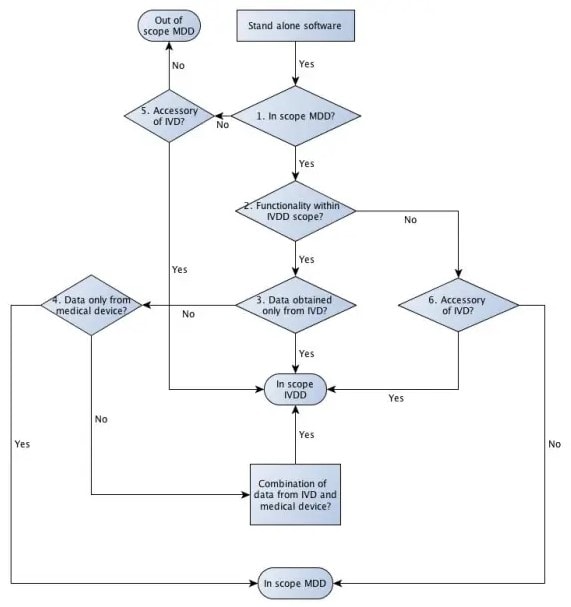
If you're dealing with complex operational processes or designing an intricate project strategy, flowcharts will prove to be a streamlined solution to your encountered troubles. However, inaccurate usage of flowchart techniques can further ruin your work experience, resulting in a total disaster. Hence, it is obligatory to conduct profound research on the types of flowcharts, their purposes, and working & creation mechanisms.
Given this background, we have formulated a detailed guide about vertical flowcharts, some vertical flowchart template examples, their significance, applications, and the in-depth procedure to fabricate them.
1. Insights Into Vertical Flowcharts
Flow diagrams aim to simplify the complicated chunks of data by dividing and arranging them into more straightforward steps. In addition to simplification and data arrangement, flowcharts are an exquisite tool to express algorithms, computer programs, business strategies, official workflows, personal work regimes, documentation processes, and other such processes.
Flowcharts are categorized into various types, including horizontal, vertical, workflows, systems, documents, swimlanes, and more, depending upon their utilization approaches & layout patterns.
Vertical flowcharts are those whose flows run vertically along the axis, like a cascade of procedural events or successive steps. The most significant attribute of a vertical flowchart is that it streamlines rectilinearly, drawn perpendicular to the page base.
Characteristics of Vertical Flowcharts
To know entirely about vertical flowcharting, you must analyze its various characteristics for better insight. The following are some salient properties of a vertical flow diagram:
- The vertical flowcharts streamline from top to bottom, drawing an orthogonal diagram on the canvas.
- Such diagrams suit portrait canvas where there's a large room for vertical information addition.
- You can utilize them to represent the chain of command because they have a top-down structure.
- Flowchart vertical patterns are ideal for scientific procedures, how-to processes, and individual plans because they can be easily portrayed on the vertical canvas.
- A vertical flowchart can occasionally expand sideward, depending upon the process requirements, but generally, the flow drifts towards the bottom.
- You can use vertical flows to demonstrate action plans, business strategies, computer algorithms, and financial breakdowns because their verticality enhances human perception.
In Which Scenario Vertical Flow Chart Can Be Used?
Vertical flowcharts have divergent uses, encompassing various fields, such as personal data management, business management, finance, teaching, algorithms designs, etc. Following are the domains where vertical flowcharts facilitate process cascading:
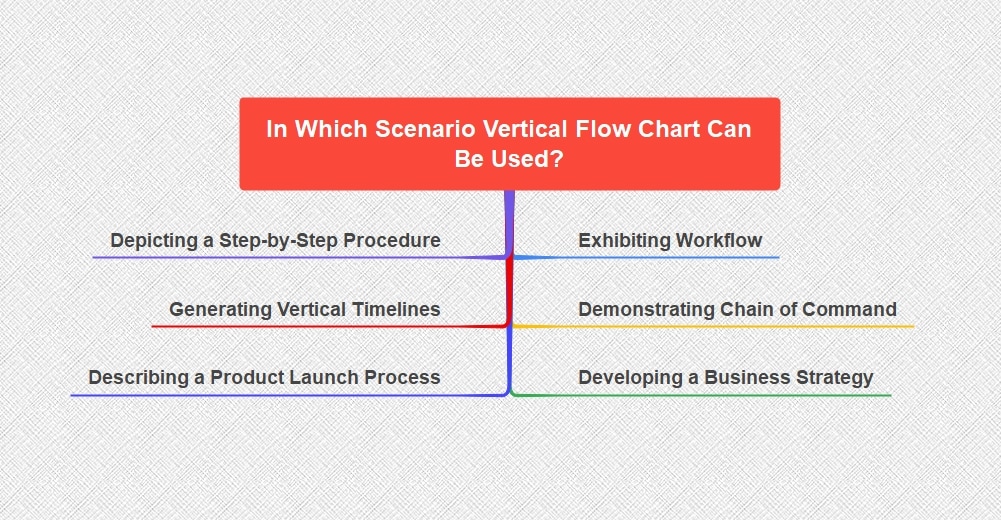
Exhibiting Workflow
You can exploit vertical flowcharts to display the workflow pattern among your teammates or staff to better understand the organizational objectives. For example, a managing director of an organization can launch a vertical process flowchart to guide the workers about how the project will proceed sequentially. It will help different tiers understand the workflow pattern, focusing them on a targeted objective.
Demonstrating Chain of Command
A vertical flowchart flows from top to bottom on a page, which can be an excellent approach to demonstrate the chain of command in your business circle. You can constitute a flowchart pertaining to different tiers and their responsibilities, connecting them through rational flows. A well-developed chain of command in an organization leads to enhanced output.
Developing a Business Strategy
Developing a business plan involves arduous efforts, requiring the organization to pass certain phases like market research, product usability analysis, customer feedback, competitive analysis, etc. Vertical flowcharts can relieve your strategizing-related troubles by providing a streamlined route to a seamless strategy establishment process.
You can organize a flow diagram of consecutive events to identify what to accomplish first, what are your design priorities, what features the product provides, which tier will evaluate what and when, what should be the marketing approach, and more.
Describing a Product Launch Process
Product launch is the final and the most momentous event in the business domain, which must be accomplished straightforwardly without any bottleneck. It is where vertical flowcharts play their roles, giving a paved route to your destined product launch process. Utilize the vertical flowcharting to visualize your launch plan to your workers to ensure everything goes smoothly.
Generating Vertical Timelines
A vertical timeline enticingly portrays the history or a brand story to the audience, making them engrossed in the brand culture. Whether you are a newbie startup enterpriser or a seasoned business professional, sketch your brand story in vertical timeline form and limelight it to the world to make your business realm known to the outside world.
Depicting a Step-by-Step Procedure
Vertical flowcharts are ideal for describing general procedural processes, such as recipes, how-to guides, and scientific or mathematical processes, in an appealing way. Rather than thoroughly reading a complex passage, a user can understand the whole process just by going through the vertical flow diagram, depicting the whole process in sequential steps.
Additionally, you can devise a to-do list, daily routine, personal project detailing, touring plan, or more using the vertical flowcharts to make your day-to-day activities easy & hassle-free.
2. Examples of Vertical Process Flow Templates
No matter which type of vertical flowchart you require, these vertical flowchart templates from EdrawMax will assist you in getting enhanced comprehension of vertical flowcharting concept and their versatile applications in different fields:
The above flowchart is an all-inclusive vertical diagram representing the dinner routine in a restaurant. The chart exquisitely portrays the dining participants, types of cuisines served, who will serve, who is watching, what would be the billing schedule, and more. The dishes further diversify, depending upon the type of customer, such as spaghetti, pasta, wine, potatoes, white-bean soup, butter, fried fish, chicken, etc.
Additionally, the visual illustrations of dishes through images and colorful bands aggrandize the appearance of this restaurant flowchart, making it a masterpiece for a large-sized restaurant business.
This simple yet well-arranged vertical flowchart for Sunday lunch routine effectively describes multiple ways to satisfy your hunger craving. For example, to consume a Sunday lunch, you first need to determine whether your mom is home; if not, you can look for something edible in the fridge.
If you find nothing worth eating in the refrigerator, you can go outdoors for lunch at a restaurant. However, ordering a piece of food online is not a bad idea if you are lazy-natured.
The audit procedures are the strategies adopted by the organization's professionals to evaluate the company's financial quality and make new policies based on the previous financial statements. The above flowchart describes three stages of the audit procedure; in the initial phase, the previous conditions are assessed, and a decision about conducting the new audit is taken. The next step involves sending a request to auditors to conduct the audit, which encompasses organizing a comprehensive survey about current conditions.
The last and most significant step in the audit procedure is to analyze the results of the audit procedure through tech-driven tools.
If you want to constitute a shopping regime for dress shopping, you can adopt and follow the above-given template example. You first need to visit the mall, shop at one store, try your preferred dress, check its size, and if you like, buy it by paying the bill. If you want to explore more, visit the next shop and repeat the process.
The above flowchart template example describes a detailed procedure for dialing a call to the call center. The foremost thing is to check whether the time in which you are calling lies in the working hours of the call center. If yes, your call will be directed to the call center, providing different dial options for different functionalities; after pressing your preferred functionality buttons, your call will be directed to a certain call center queue.
3. How To Create a Vertical Flowchart Using EdrawMax?
Creating a flowchart manually on MS Word or using outdated tools can impart massive trouble to you, requiring excessive effort and time to construct even a simple flow diagram. Thus, you must scrutinize the market for a reliable tool providing state-of-the-art features to empower convenient flowchart creation and editing.
Wondershare EdrawMax is a one-stop solution for all your diagramming needs; serving as a Swiss army knife, it provides a comprehensive toolkit for flowchart making, editing, sharing, and publishing. Its cutting-edge features like drag-and-drop, symbols library, quick customization bars & dropdowns, and one-click beatification enable you to configure your flow diagrams in minimal time.
Creating A Vertical Flowchart Using EdrawMax
Step1
Launch "EdrawMax" to use it for creating your vertical flowchart.
Step2
Click the "New" option from the left panel, and select the "Basic Flowchart" option to start from scratch.
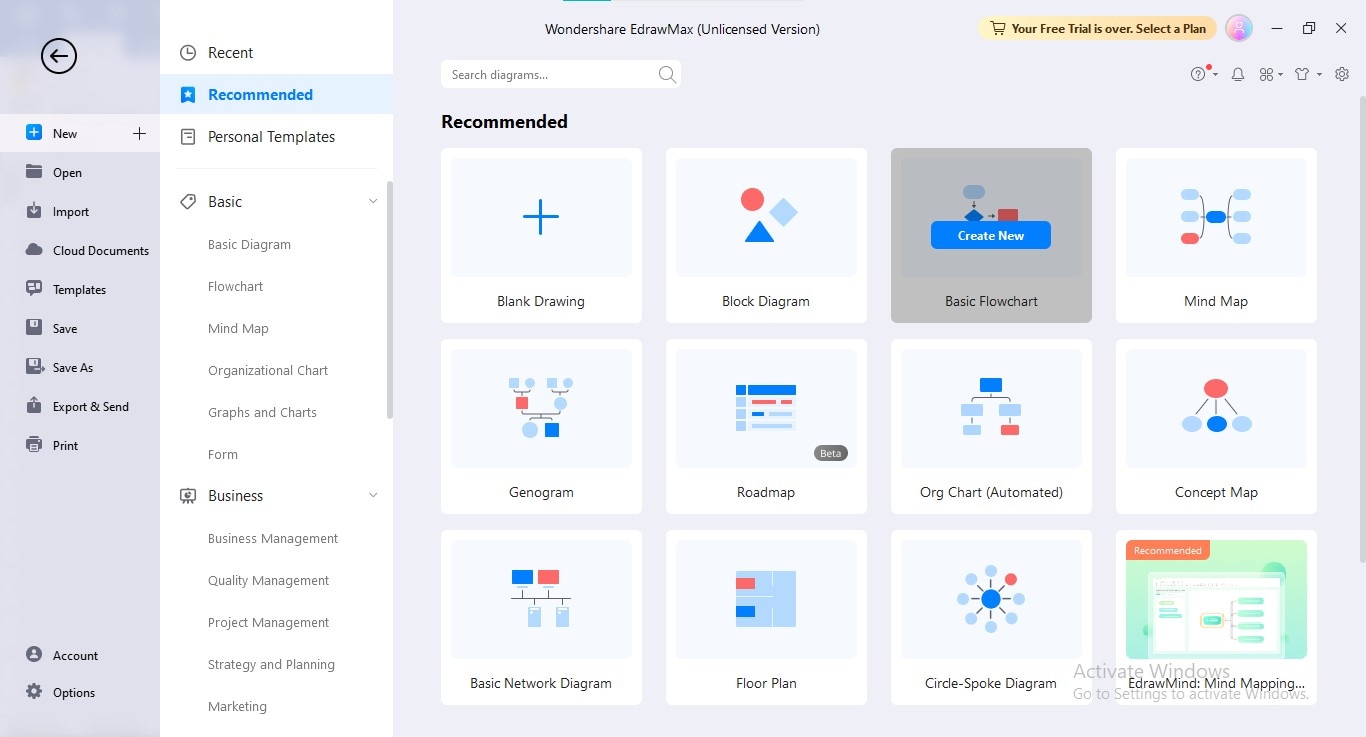
Step3
Enter the required information into your vertical flowchart to complete it.

Step4
Customize your vertical flow diagram using the color scheme, diagram layout, theme, and background of your choice.
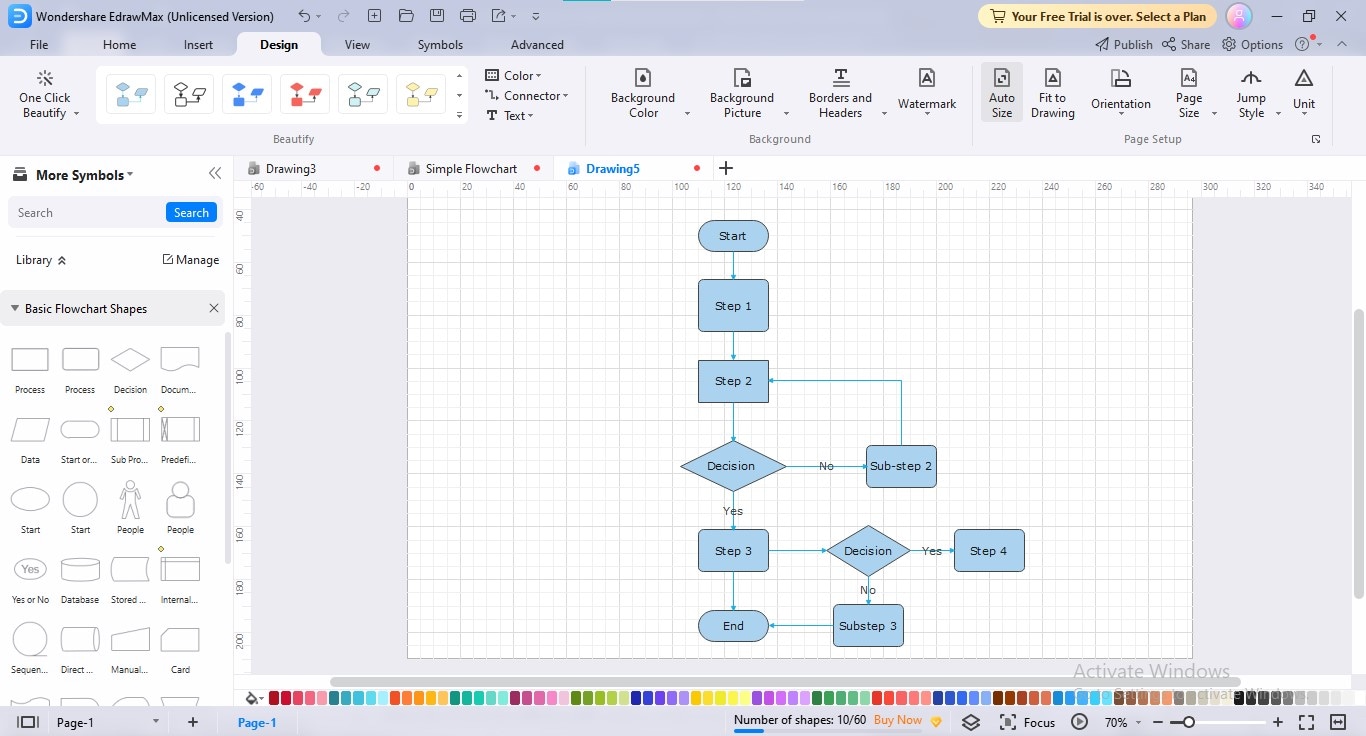
Step5
Click the "Export" option at the top panel to access your vertical flowchart in your preferred format.
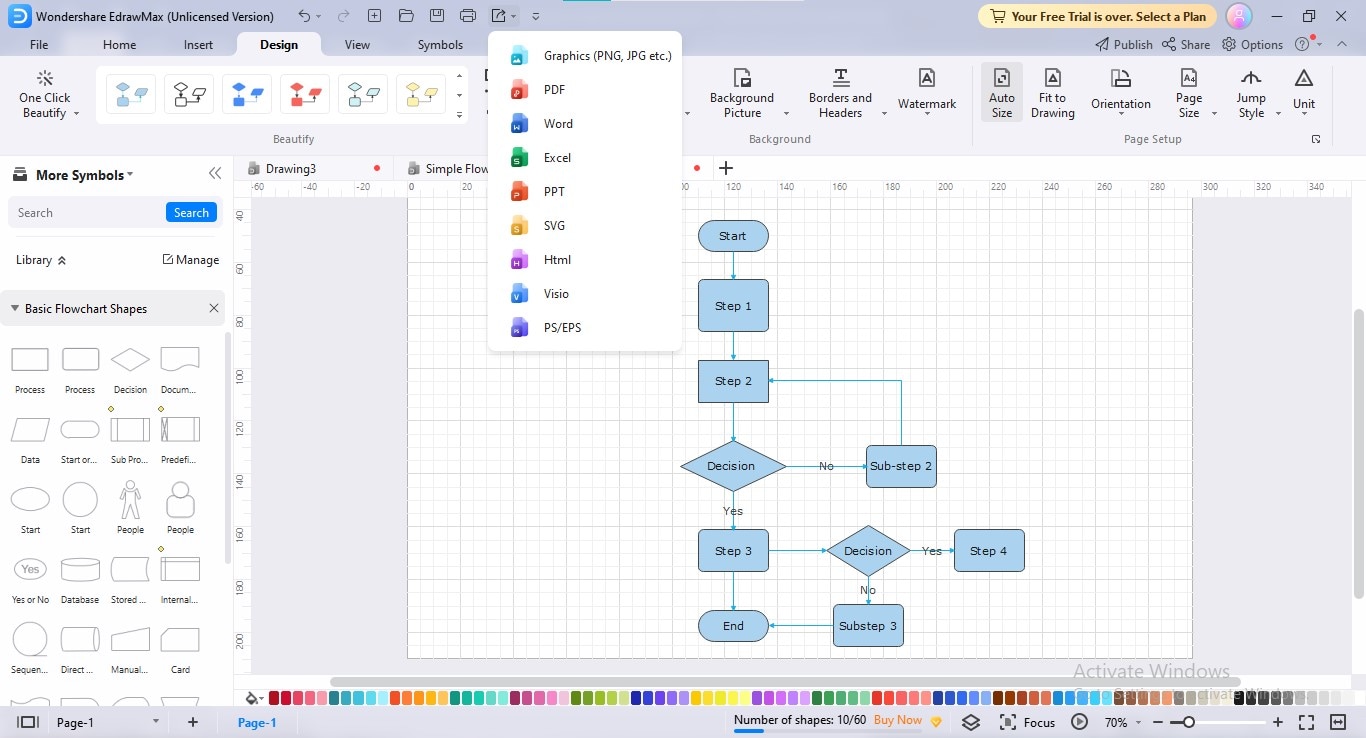
4. Conclusion
Vertical flowcharts envision complex processes by presenting them in a rectilinear way, utilizing a top-down approach. Being multipurpose, you can employ them in various spheres, including personal needs, business, finance, marketing, teaching, training, onboarding, and so on.
Considering these perks, this article explained the vertical flowchart technique, encompassing visualized vertical process flow template examples. Moreover, the guide also presented the detailed procedure for crafting a personalized vertical flow diagram using a top-notch platform: EdrawMax.





 below.
below. 



